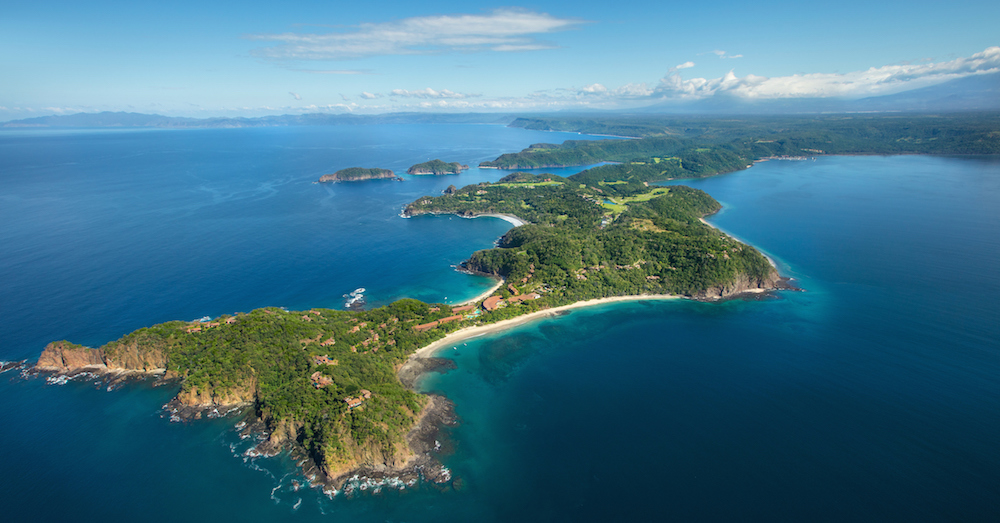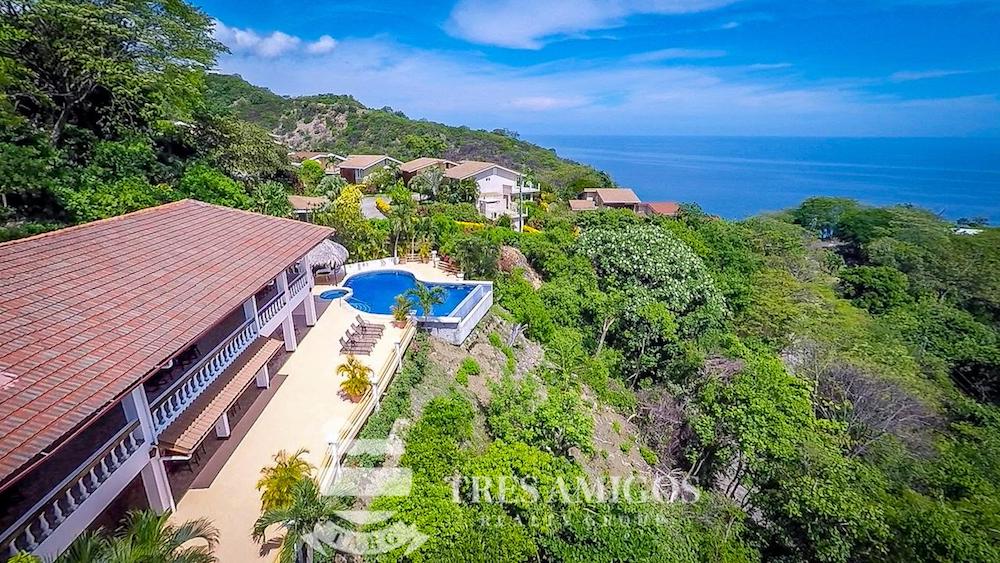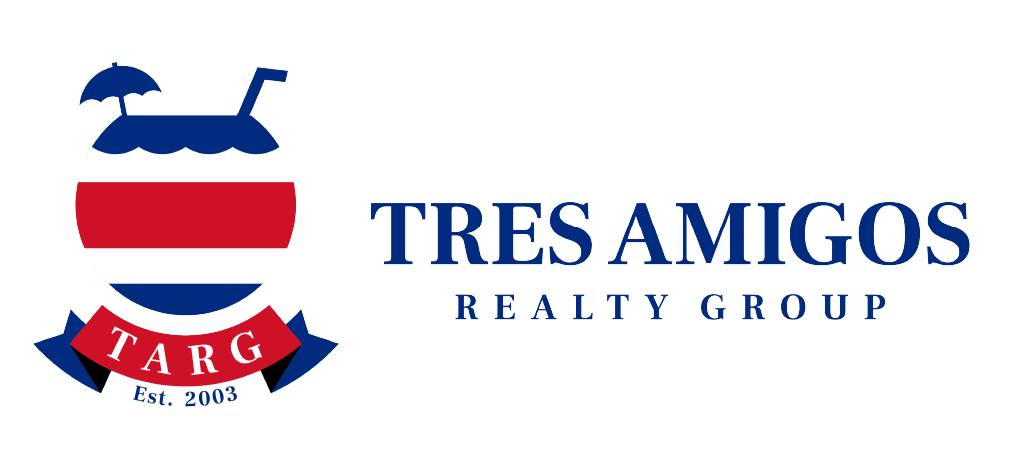Imagine a luxury destination surrounded by untouched nature and biodiversity--like sparkling diamonds sprinkled on a length of emerald-green velvet—alongside a great, calm sea of clear blue water, teaming with wildlife. Is it too good to be true? No, for the Papagayo region of Costa Rica is no figment of your imagination. It is very real and yet unimaginably beautiful.
Where is Papagayo?

Papagayo is not a town, it is a region. It is situated on the northern Pacific coast of Guanacaste in Costa Rica. Its northern boundary is Punta (Point) Santa Elena and it continues south to Punta Gorda. The heart of the Papagayo region is the Bahia (Bay) Culebra formed by the huge Papagayo Peninsula jutting out to the north and Playas del Coco (playa means beach) to the south with Playa Hermosa and Playa Panama in between. The region encompasses 19 communities and is a unique blend of tourism and nature.
One of the deepest and most protected natural bays south of the US border, Bahia Culebra provides shelter and breeding grounds to an abundance of marine life from large schools of fish to pods of whales.
The 1,400-acre Papagayo Peninsula is surrounded by water on three sides, carpeted by dense forest, fringed with white sand beaches, and studded with luxury accommodations. It has been described as a “sophisticated community set in a primitive playground.”
History of the Papagayo Region
Tourists were not the first to discover the Papagayo region; nor were the Spaniards. The region has a rich history dating back more than a thousand years to a thriving indigenous population; it was one of the first coastal areas populated in what is now Costa Rica.
The birth of Papagayo as a tourist destination began in the 1960's. In 1965 the Central American Bank for Economic Integration (CABEI) outlined its policy of promoting the development of tourism in the Central American region. Over the next few years areas with the greatest tourist potential were identified. The Bahía de Culebra (today known as the Gulf of Papagayo) was designated a top level location for the development of tourism related projects.
In the 1970’s the then president of Costa Rica, Daniel Oduber Quiros (for whom the Liberia International Airport was named) - knowing the area was truly a diamond in the rough - declared the Papagayo region of “national touristic interest.” The area was designated a “tourism zone,” and specific zoning and government incentives were put in place to attract hotel and resort development.
In April 1978, the ICT approved an Economic and Financial Technical Feasibility Study, the Master Plan and Preliminary Design of the Bahía Culebra Tourism Project. Based on these results a number of laws were passed in support of the development of this region as a prime tourist destination.
After a few rough starts and wrong turns, the area has become an example of responsible development and sound ecological practices, at the same time netting in over a billion dollars of investment and development monies. It has attracted targeted investments that balance profit and purpose while at the same time controlling the environmental footprint (1).
Why is Papagayo so Popular as a Vacation Destination?
We already mentioned the luxury accommodations and the biodiversity… But wait! There is so much more!
Weather
The Papagayo region has a very comfortable coastal climate with a sunny dry season and a low-rainfall wet season. You can enjoy endless summers with daytime temperatures averaging 82-90F. Plan your picnics months in advance!
Beaches
Have we mentioned the beaches? There are 14 uniquely beautiful beaches in the area—some with amenities, others secluded, all with calm water and soft sand in colors that vary one from another. Playa Nacascolo (on the Papagayo Peninsula) was voted one of 2014’s most beautiful beaches by Travel & Leisure. Explore all 14 and you find your favorite!
Convenience
Almost every destination in the Papagayo region is just ½ hour from the Liberia International Airport (LIR), and transportation options abound. The sparsely populated countryside may give rise to the question, “Where is the nearest grocery store??” Just a few minutes from any location and you are in the bustling beach community of Playas del Coco. Coco is the business hub of the region and is replete with services, shopping, restaurants and nightlife. This is the jumping-off point for the myriads of watersports and outdoor activities the area has to offer. The communities of Playas Hermosa, Panama and Ocotal are more low-key and have developed in to high-end bedroom communities serving expats, tourists and Costa Ricans.
Why is Papagayo a Popular Place for Retirement?
Luxury Lifestyle
Papagayo offers the best of two worlds: luxury in the jungle. There is a thriving expat community in place for guidance, support, and friendship. Play a round of golf on the Arnold Palmer Golf Course and enjoy hilltop views of the Pacific every time you tee up. Build your custom home high on a ridge facing the sunrise or buy a move-in ready estate overlooking the Pacific Ocean and enjoy amazing sunsets every evening from your infinity-edge pool.
World-class healthcare
Costa Rica is known for its high level, affordable healthcare and modern state-of-the-art medical facilities. As a resident pf Costa Rica, you will enjoy the benefits of the national healthcare program while still having the option to purchase additional insurance or pay for doctor’s visits out-of-pocket.
Cost of Living
Your monthly expenses will depend on your spending habits, tastes and activities. Your larger expenses will be housing and electricity, followed by food, travel expenses, internet, and entertainment. Many retirees live basically but comfortably on $2000 a month, but any upgrades in housing and entertainment will increase that amount. Vehicles cost about twice as much to buy as in the U.S., but they hold their value and can often be sold with very little loss.
Activities
The Papagayo region is an outdoor sport mecca and therefore a chance for retirees to stay active and healthy. Snorkelers and scuba divers will enjoy the clear waters teaming with marine life, as will the sport fishermen for the same reason! Other water-based activities include kayaking, jet skis, parasailing and catamaran tours. For the landlubbers there are ATV tours, ziplines, mountain biking and golf.
There are several interesting parks in the area for day trips:
- Rincon de la Vieja National Park
- Monteverde Cloud Forest
- Santa Rosa National Park (1 1/2 hours)
- Palo Verde National Park (2 hours)
If I visit Papagayo, where should I stay?
Here are some of the most popular places to stay in Papagayo, everything from the most luxurious to comfy, lower-cost alternatives nearby. Prices vary throughout the year depending on high and low tourist season so search for current pricing during your travel dates.
Luxury options:
- Four Seasons Resort at Peninsula Papagayo—This 5-star resort is tucked into the jungle all over the end of the peninsula and is the epitome of comfort, privacy and luxury.
- Andaz by Hyatt has luxurious accommodations that feature natural design and finishes that emulate and blend seamlessly with the surrounding terrain.
Mid-range options:
- Occidental Papagayo is an adults-only, all-inclusive resort with beautifully landscaped grounds overlooking scenic Bahia Culebra.
- El Mangroove is a beachfront hotel that features boutique hospitality at its best.
- RIU is an all-inclusive hotel located directly on beautiful Matapalo Beach.
- Hotel Bosque del Mar in Playa Hermosa is a high-end, beachfront property with a focus being eco-conscious.
Budget options:
- El Velero is a Mediterranean-style boutique hotel right on the beach at Playa Hermosa.
- Hotel Mangaby is a modern, 2-story hotel with 17 rooms.
How much does it cost to buy a home in Papagayo?
 If you choose to live on the exclusive Papagayo Peninsula itself, homes with stunning ocean views start near the $1 million mark. But you don't have to live right on the Peninsula to enjoy the many benefits of the Papagayo region. A one-bedroom condo in Playas de Coco can cost as little as $60,000; an ocean-view home in Playa Hermosa can be found for around the $300,000 mark. There are options available for all budgets.
If you choose to live on the exclusive Papagayo Peninsula itself, homes with stunning ocean views start near the $1 million mark. But you don't have to live right on the Peninsula to enjoy the many benefits of the Papagayo region. A one-bedroom condo in Playas de Coco can cost as little as $60,000; an ocean-view home in Playa Hermosa can be found for around the $300,000 mark. There are options available for all budgets.
If you want to know more about Costa Rica real estate or living in the Papagayo region, contact one of our agents. They will be happy to help you get to know this unique and very popular region of Costa Rica.





